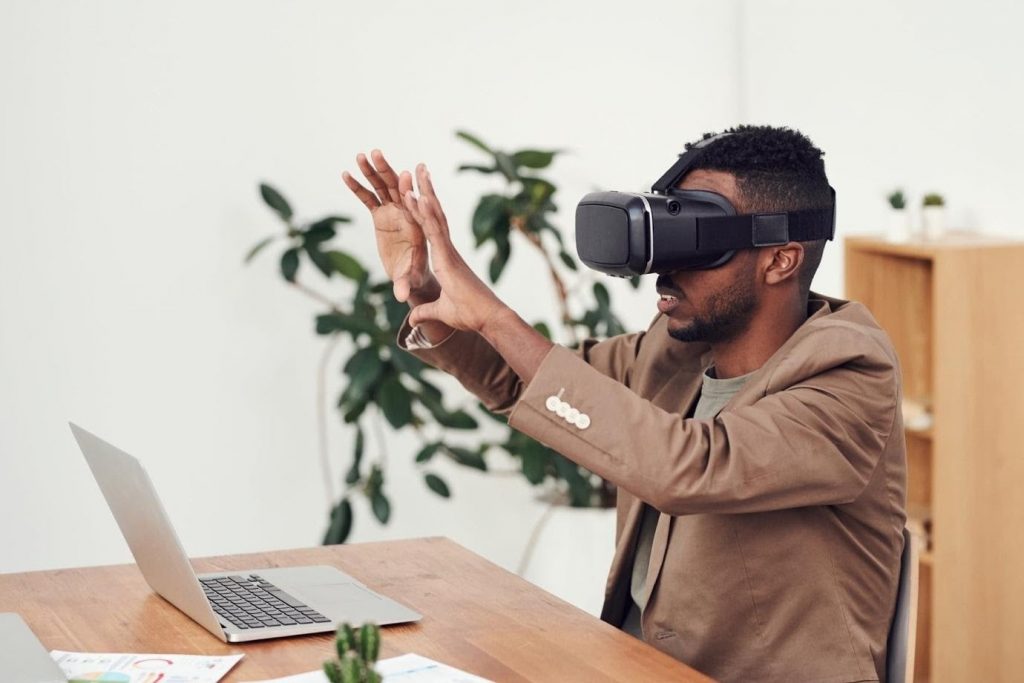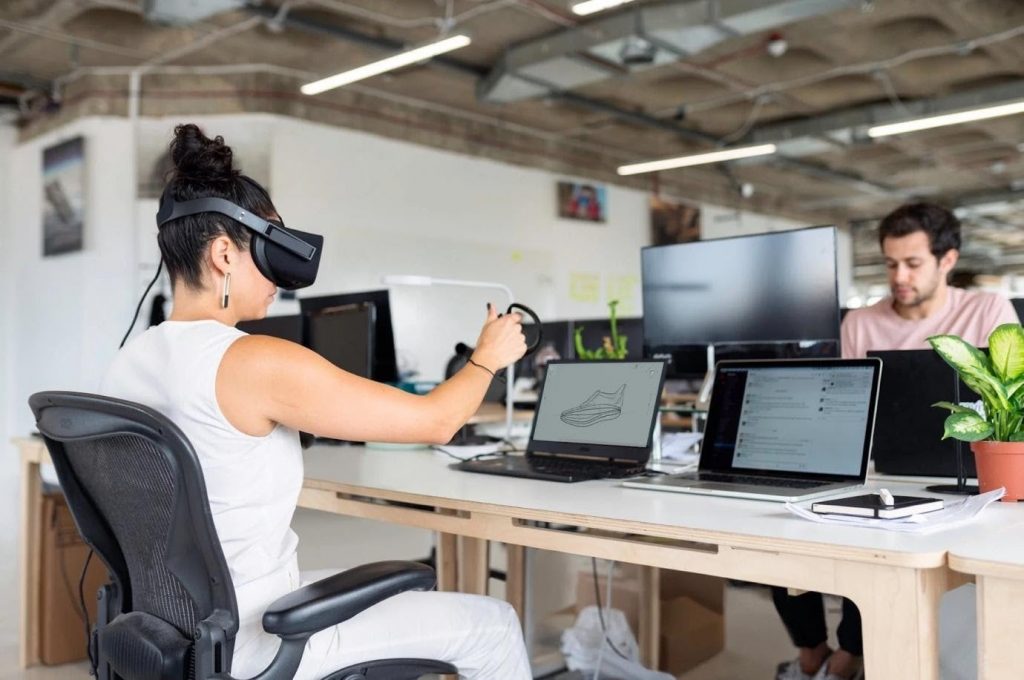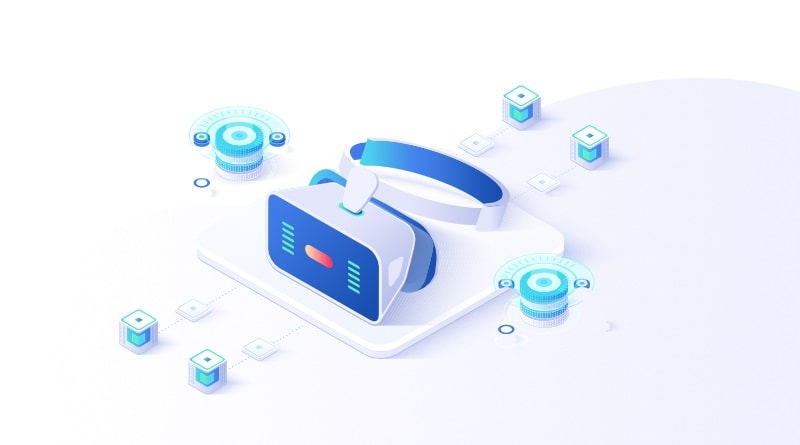Currently, we enjoy all the benefits of the digital era without paying attention to some things we are accustomed to, like pop-ups, convenient interfaces of the websites we surf, sensors, and many other matters. All those things emerged and were enhanced thanks to advanced technologies, UI/UX features, and elements. Such reveal an enormous amount of opportunities to make content and appearance of web resources attractive and even capturing.
The most innovative technologies used for that are web virtual reality (VR) and augmented reality (AR). They can present a quite new experience of using websites and transforming the Internet in general. It can dramatically change the web development future too. It determines how the applications and different tools will be developed to make those more engaging for users. This may be too complicated for a person who is not of a technical mindset. Jatapp has selected the best info on the matter. So, let’s start from the basics and move across the most important tendencies in the industry.

What Is Augmented Reality?
Augmented reality is an interactive, real-world experience where different elements from the real world are enhanced thanks to using perceptual and computer-generated data. This is sometimes made thanks to combining different modalities related to the sensory information, like auditory, visual, somatosensory, haptic, and olfactory. In the outcome, augmented reality on websites and in apps will enable you to see reality virtually to make a user experience consistent.
Read: You Can Build A Website Without Knowing How To Code
Everything is more or less clear, but you need an example, don’t you? Here is one for a start. Exactly thanks to AR, you may easily use your smartphone, for instance, by putting computer-generated pictures over the environment that really exists. AR is a kind of intermediary between virtual reality and the real world. Later, we will find out also the difference between virtual and augmented reality as they may only sound common but are different in fact.
How AR Is Used For The Web
Web augmented reality is focused on adding extra digital features and elements to the surrounding existing reality, as in the example of a smartphone, you may see the real world through the camera your device has. Adding extra features, tuning the settings of a picture will become possible thanks to that. AR enables elaborating on compatible solutions, creating panoramic images, and rearranging the appearance of videos.

If we speak about digital marketing and advertising, those have already gained an enormous number of benefits thanks to AR. Using it enables showing products and services more attractively and conveniently for users. Marketing specialists can even build mobile (or web) simulated environments thanks to which customers may better perceive a product. Consequently, customers may become better engaged in the process of gaining a user experience while selecting and using this product. And this will consequently increase the probability of sales for such a product.
Here is another example of a case where AR is applied successfully. Let’s say we have a customer who wants to test some product, for instance, to buy clothes. Using one’s smartphone or another device with a camera and respective application will help such a user to pick the item that interests him/her and take one’s picture. An application made using AR will overlap the image of a piece of clothes and the customer’s appearance. In the end, a user will be able to see how this thing will approximately look like in his/her case in real life. This may be especially important when the story comes to the color of clothes or their shape—the same thing with picking cosmetics for ladies. AR will enable users to switch between the product standing nearby the specially designated device and see in real-time how certain pieces of cosmetics will look like by switching those easily. That may be especially valuable for choosing lipstick, for instance.
If we look at AR not from the point of appearance only but also a deeper (technological) perspective, it is easy to notice that it goes far on the web. JavaScript makes available many features that enable web developers to create more advanced applications or enhance the existing ones.
Even global search engines, like well-known Google, use AR in their day-to-day work. The same thing is with web-browsers. Google Chrome is a good example of that. This enables, among others, placing digital items into a real-world view, for instance.
AR is also used in other spheres. For example, it is successfully utilized for headsets in the aviation, engineering, and even education industries. AR may become irreplaceable for project managers who wish to visualize any considered project by taking notes about it and reviewing its blueprints in a real-time mode.
And the last interesting example where AR is used is tourism. Arranging virtual tours that are close to the real ones becomes possible thanks to AR technologies. Users may preliminarily assess which places will be more interesting for them to visit in real life.
How Does Augmented Reality Work?
Any computer, laptop, or mobile phone that uses AR, creates a picture of the environment a user would like to track. A used application will utilize a range of recognition technologies to display a picture captured from surroundings. Virtual reality website design uses a similar approach and enables users to take pictures and match those with the information and pictures placed on this website. This enables a more effective and conscious consumer experience and choices for users. Even more – users consider such kind of service to be more adapted to their needs for obvious reasons. And that adds loyalty to the brands that use AR for arranging their work and sales.
This technology opens an opportunity not only for processing pictures taken by a camera in some of your gadgets but also for arranging the work of sensors, compasses, and GPS. Yes, all those things you considered to be usual and have accustomed to were developed thanks to AR.
A Bit More About User Experience
Virtual reality website design is developed nowadays with an emphasis on a better customer experience. AR has also moved from basic static websites to dynamic ones where data is changing permanently. What things does AR provide here? That is an opportunity for 360 user experience.
Augmented reality websites open more opportunities for effective interaction with customers and include more details at all “Z-axis” angles. That is not a two-dimensional screen already but an effective in-space experience where all key components are reachable easily.
Another type of worthy user experience that has become open thanks to AR is tactile interactions – sensors. It is possible to zoom in and scroll a smartphone by using it intuitively only. This is how AR creates opportunities for a more convenient user experience and live interactions.
Have you ever heard about “contextual computing”? This is how AR uses different analytical resources to resolve tasks on its agenda. The technology tries to understand users and their preferences all the time. AR will collect contextual information about the history of views and detect the current environment to provide users with the likely best content for them.
About Voice Interaction In AR?
While arranging the work of apps with AR, it is also possible to use voice commands only. Augmented reality designers already use speech recognition technologies and voice commands to help customers speak aloud their commands simply. This feature has been proven to be a workable one in many industries, like e-commerce and gaming. This is a kind of fascinating experience for users that is humanized and adapted to their needs maximally.
What Things Make VR Different From AR?
Virtual reality is another kind of engaging thing that can disconnect a user from its surroundings and the real-life world. To perceive this reality, it is sometimes necessary to have a headset or more advanced equipment. This enables gaining a totally different experience. 3D web design can really impress anybody. And customers may enjoy this product while simply staying at home.
What benefits VR can bring to users apart from a non-standard experience? Creating and launching virtual showrooms that can help present some features of products in a better and more attractive way becomes possible. Presenting an opportunity for testing a product is another option that becomes available thanks to AR. And sometimes, using a smartphone only may be enough to experience augmented reality on a website or elsewhere.
Speaking About The Future
Augmented reality and the future of web design are strongly interrelated. There are many points for improvement in this regard. The main purpose is to enhance user experience giving top-notch images that appear to be more realistic than before. Such should also be optimized for mobiles and viewed quickly also.
Resolving these matters, in fact, depends on various important things to consider, like preferences of customers, data, and handling lasting examinations. The more realistic the picture appears – the more work it required before.

Using AR opens opportunities for better data analysis and procession of information. It also enables developing more advanced and high-quality content that naturally attracts more attention because it is made close to the natural ones and attracts more attention at the same time.
The main trend in this area is a combination of benefits and approaches of AR and VR. This will likely enable adding extra user experience to customers making it more realistic, flexible, and also fast in a digital environment.
Another significant trend is moving from desktops to mobile apps. Developing technologies for mobile devices is more in demand nowadays. The single industry where AR is highly developing for desktop computers is gaming.
Still, the industry is passing through intense transformations at the moment. It is difficult to predict how the industry will change in the nearest future as lots of features and application approaches are developing every month. And outer trends also have an impact.
AR is used for modernizing the healthcare industry, for instance, to make the interaction of patients and doctors more safe and convenient. This technology enables applying automatization of internal processes inside the hospitals and decreases the risks of failures from the side of medical personnel. AR is also used for arranging better remote interaction in other fields, including for arranging effective communication during the working processes.
Final Words
Using VR is a technological kind of thing we are accustomed to already but don’t pay too much attention to. This is a part of our daily user experience while dealing with a smartphone, laptop, or computer. This technology helps to transform the real world into the interface of our devices, making those pictures realistic and attractive for review at the same time.
If VR is used wisely, it can bring a new experience to users and provide more opportunities for sales. It is possible to arrange a showroom, review all features of a product while straying online. And this becomes possible thanks to AR. Bringing the real world to your smartphone will also become possible thanks to AR. You may easily take pictures, add filters, or change the settings of the images you take.
The future of the web is impossible without AR and its companion – VR. The last one creates another experience of reviewing the world in a totally different manner – by disconnecting from it. Both technologies are developing intensively to bring more add-ons and features to the software and applications we use. It will also become possible to process data more effectively and consider the preferences of users in a form more suitable for them. AR will bring pictures that will appear more realistic and more attractive for users to view easily and have more desire to buy a product or gain extra user experience.








